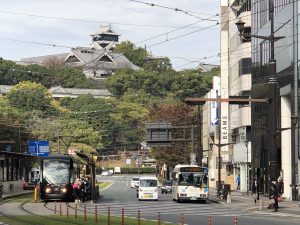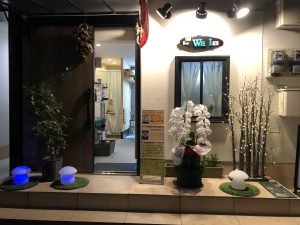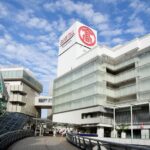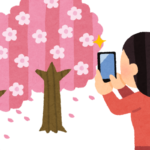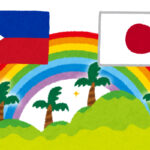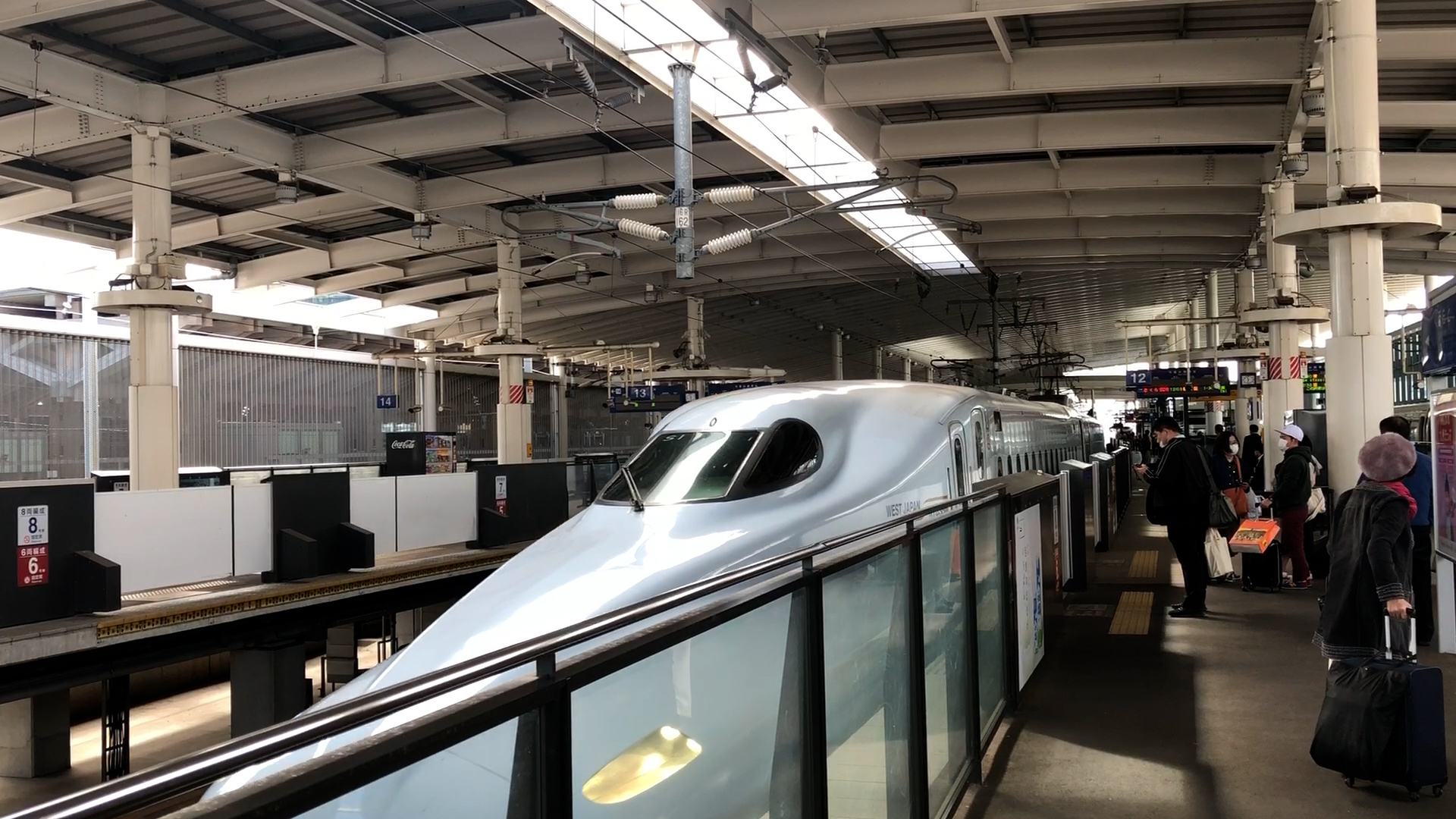
We walked to Kumamoto Castle before 9 o'clock. I saw many people wearing coats on their way to work, and I got the impression that autumn had deepened.
On the way, I took a picture in front of the statue of Kiyomasa Kato, the general samurai who built Kumamoto Castle in the Warring States period, but it was a little disturbing because there were some materials for the preparation of the event.
Since this is a tourist spot, a little more consideration should be given to it.
Kumamoto Castle, which was severely damaged by the Kumamoto earthquake four years ago. You used to be able to walk around freely, but now it's under repair and you can only walk around the patrol route.
Cross the Miyuki-bashi Bridge and purchase a special admission ticket (500 yen) at the Wakuwaku-za ticket vending machine in the Sakura-no-baba Josaikan and go on the Kumamoto castle.
At the south entrance, write down our contact information and whether we have a fever or not on the questionnaire before entering the park.
We walked along the route. There were unexpectedly many tourists, and a group of junior high school students were divided into several groups and walked along the route while listening to the explanations of the volunteers.
Without asking, I listened to the explanation, and it was interesting to hear the older man's explanation in his Kumamoto dialect.
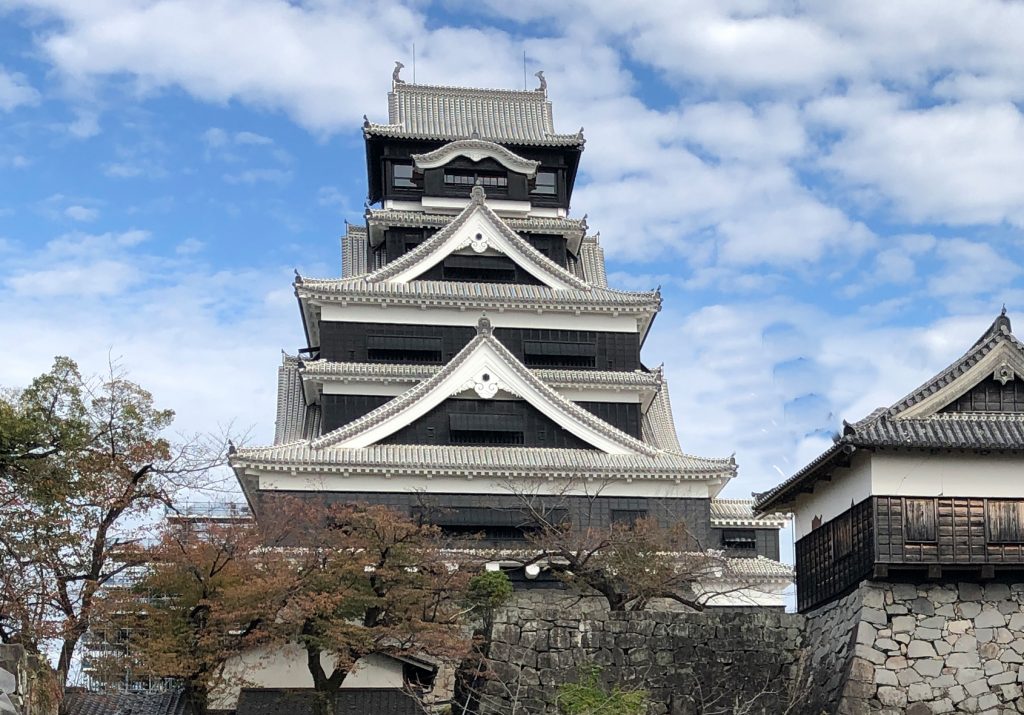
The Kumamoto Castle tower was destroyed by fire during the Battle of Sekinanbu, and the current tower was rebuilt in 1960 using reinforced concrete. The stone walls of the castle tower and Udo Tower were built more than 400 years ago during the Keicho era, which was a period of great change from Toyotomi to Tokugawa.
By the way, it seems that this Keicho period was not only a time of social upheaval, but also of upheaval on the plateau.
The Keicho earthquake struck a tsunami from the Boso Peninsula to Kyushu. Asama erupted. Hachijojima and the eruption of Mt. Asama, the Aizu earthquake, and the Sanriku earthquake.
The Great East Japan Earthquake, the Kumamoto Earthquake, and the torrential rains have caused a series of major disasters, but I am reminded that Japan is truly a country of many disasters.
As you can see in the photo, the exterior of the castle tower, which looked like smoke billowing from the main earthquake in Kumamoto, is undergoing significant repairs, but there are still scars everywhere.
We walked around for about an hour and a half, then returned to the hotel and took the tram to Kumamoto Station. I thought my wife might be interested in this tram because it's rare in Japan and we don't have a tram in the Philippines, but she didn't. Because she is a girl, right?
We moved from Kumamoto to Hakata by Shinkansen. With JAL's dynamic package, the price was the same for regular seats and reserved-seat regular seats. As for seat selection, it is definitely recommended to use reserved seat because the seat selection is more comfortable and has 2 seats per side as well as green car.
It takes only 36 minutes to get to Hakata, and the average speed is 200 km/h.
The highway bus from Kumamoto Sakuramachi Bus Center to Hakata Bus Center takes 114 minutes. so the difference is significant, but the price is also high. A regular seat on the shinkansen costs 4,700 yen, while the highway bus costs 2,280 yen. On the other hand, the price for the highway bus is 2,280 yen, so the Shinkansen is 2,420 yen more expensive. It's a matter of time or price. By the way, the fare of the Shinkansen is 130 yen per minute.
We arrived in Hakata at noon and took the subway to Nishijn because I had some time before checking in at the hotel.
We had lunch at "Coffee Ito" where I used to go when I was a student.

This coffee shop celebrated its 40th anniversary last year. At the time, many of the customers were students and had been frequenting the cafe since shortly after it opened, and it had become a club hangout. The master's hair has turned white. But the atmosphere and the taste of the restaurant are still the same. I try to go there every time I return to Fukuoka.
I have the Kentucky hot press sandwich set. My wife has a meatloaf hot press sandwich set. My wife was curious about how to make them. I've kept it a trade secret. One of these days she might want a hot sandwich press.
There was a JINS store right next to the Hotel Nikko Kumamoto, and my wife wanted to buy a pair of glasses, but it was before the store opened, so we were talking about getting them in Fukuoka.
When I looked it up on my phone, I found a store in Praliva, which was built on the site of Iwataya in Nishijin, so we stopped by. My wife tried on a variety of glasses and then bought them. It only took me 10 minutes from optometry to getting my glasses. Moreover, it was cheap for 5,000 yen.
My wife had bought her glasses at Ayala Mall in Cebu City, but I think they were about twice as expensive as this one. So my wife asked me why the glasses were cheaper in Japan.
I don't know clearly whether it is because of the high cost of imported goods in the Philippines, or because not many people wear glasses. It might be due to deflation, but I answered "I don't know" because my English is not good enough to explain.
Tonight's hotel is Hotel Nikko Fukuoka. It's a double room superior, so it's 29.5m2 in size. It's larger than the Nikko Kumamoto, so there's a sofa and it's comfortable. It is convenient to move around in front of Hakata station. This time we are staying without meals, but when I stayed before, the Japanese food was very good with breakfast.
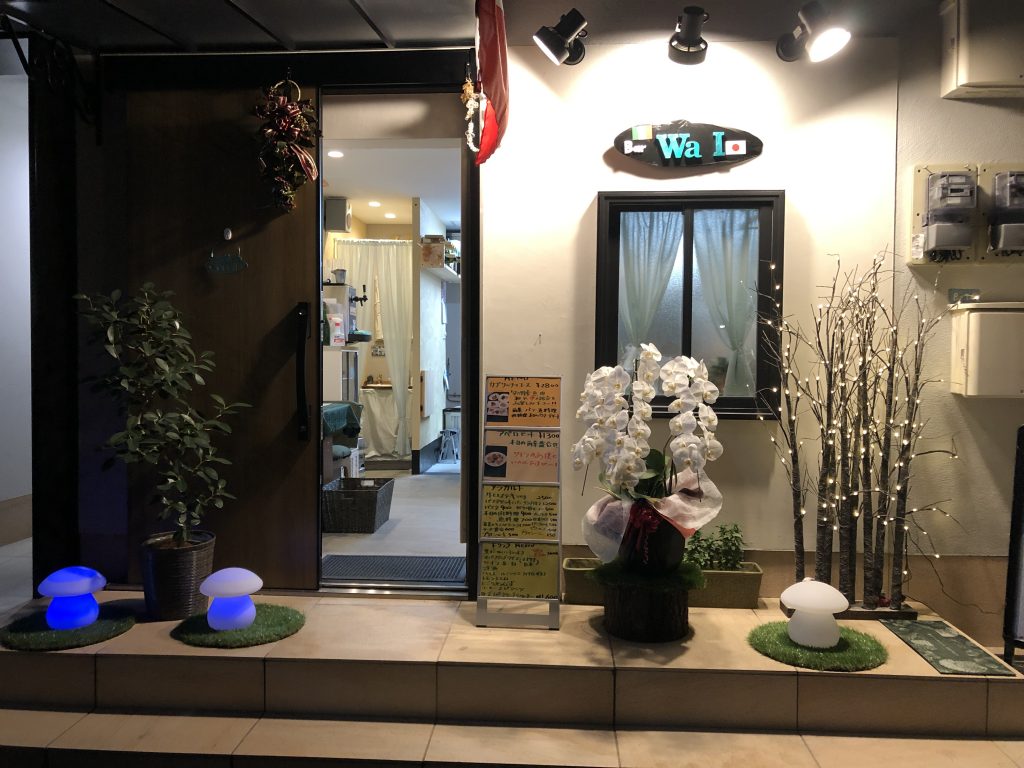
For dinner, We visit Bar Wa I (3-8-10 Watanabe-dori, Chuo-ku, Fukuoka City), which was opened last month by a friend of mine. (Continued)
